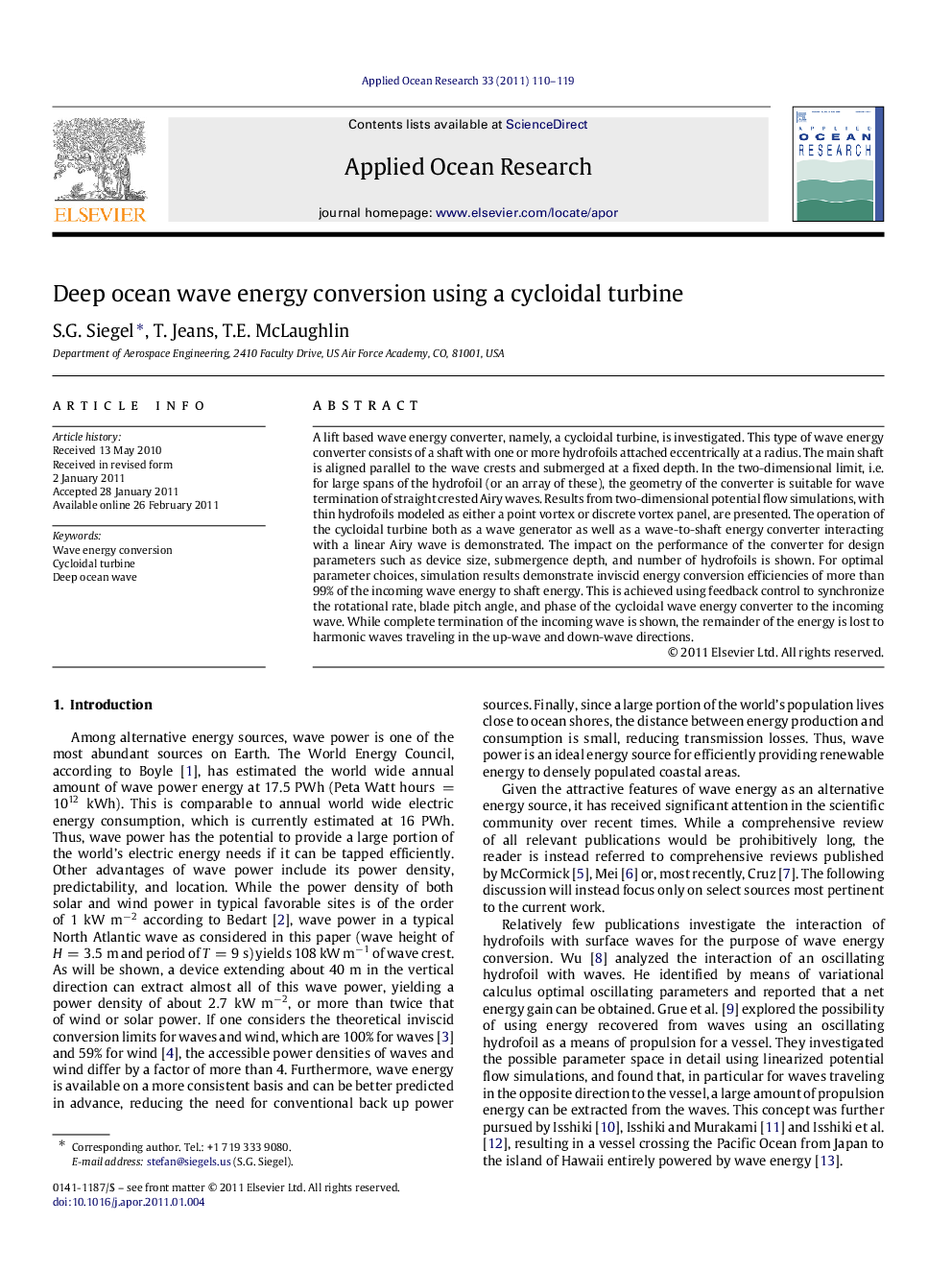| Article ID | Journal | Published Year | Pages | File Type |
|---|---|---|---|---|
| 1720360 | Applied Ocean Research | 2011 | 10 Pages |
A lift based wave energy converter, namely, a cycloidal turbine, is investigated. This type of wave energy converter consists of a shaft with one or more hydrofoils attached eccentrically at a radius. The main shaft is aligned parallel to the wave crests and submerged at a fixed depth. In the two-dimensional limit, i.e. for large spans of the hydrofoil (or an array of these), the geometry of the converter is suitable for wave termination of straight crested Airy waves. Results from two-dimensional potential flow simulations, with thin hydrofoils modeled as either a point vortex or discrete vortex panel, are presented. The operation of the cycloidal turbine both as a wave generator as well as a wave-to-shaft energy converter interacting with a linear Airy wave is demonstrated. The impact on the performance of the converter for design parameters such as device size, submergence depth, and number of hydrofoils is shown. For optimal parameter choices, simulation results demonstrate inviscid energy conversion efficiencies of more than 99% of the incoming wave energy to shaft energy. This is achieved using feedback control to synchronize the rotational rate, blade pitch angle, and phase of the cycloidal wave energy converter to the incoming wave. While complete termination of the incoming wave is shown, the remainder of the energy is lost to harmonic waves traveling in the up-wave and down-wave directions.
